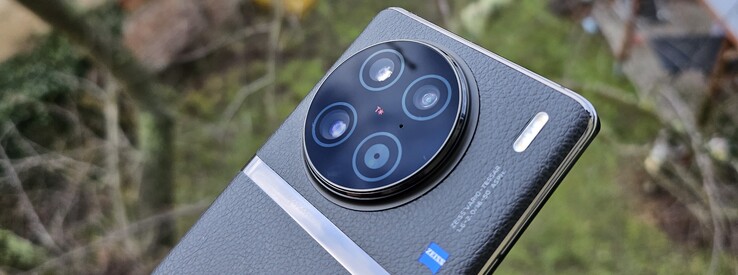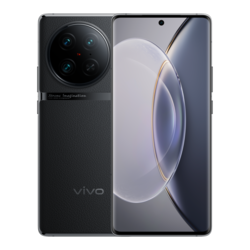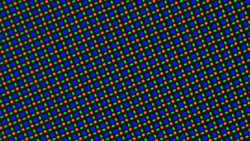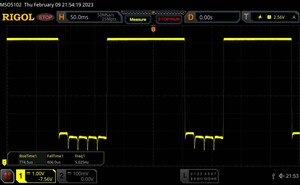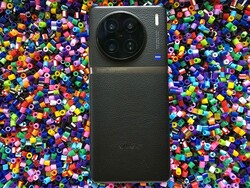A questionable upgrade to the X80 Pro. While the Pro+ model of the Vivo X90 series relies on a Qualcomm Snapdragon 8 Gen 2, the X90 Pro uses the new MediaTek Dimensity 9200. Our review will tell how well the chipset performs in everyday use and what shortcomings Vivo X90 Pro has.
Marcus Herbrich, ? Daniel Schmidt, ✓ Anton Avdyushkin (translated by DeepL / Ninh Duy), Published ?? ?? …
After we already reviewed the actual flagship of the X90 series, the Vivo X90 Pro+, which is only available in China or as an import, we will take a closer look at the European top model. The Vivo X90 Pro also relies on a camera system with Zeiss branding and Sony’s large IMX989 image sensor in a 1-inch format.
The Vivo X90 Pro’s features are also impressive. The 6.78-inch, 120 Hz Samsung E6 AMOLED panel has a peak brightness of 1,300 nits, and the fast MediaTek Dimensity 9200 chipset, which is supported by 12 GB of RAM and 256 GB of storage.
Graphics adapter
ARM Immortalis-G715 MP11
Display
6.78 inch 20:9, 2800 x 1260 pixel 453 PPI, Capacitive Touchscreen, AMOLED, glossy: yes, HDR, 120 Hz
Storage
256 GB UFS 4.0 Flash, 256 GB
, 221 GB free
Connections
1 USB 3.0 / 3.1 Gen1, USB-C Power Delivery (PD), 1 HDMI, 1 DisplayPort, Audio Connections: USB-C, 1 Fingerprint Reader, NFC, Brightness Sensor, Sensors: accelerometer, gyro, proximity, compass, color spectrum, OTG, Miracast, IR Blaster
Networking
Wi-Fi 6E (a/b/g/n = Wi-Fi 4/ac = Wi-Fi 5/ax = Wi-Fi 6/ Wi-Fi 6E 6 GHz), Bluetooth 5.3, 5G: N1/N3/N5/N8/N28A/N38/N40/N41/N77 /N78/N79; 4G: B1/B2/B3/B4/B5/B7/B8/B12/B17/B18/B19/B20/B26/B28A/B34/B38/B39/B40/B41; 3G: 850/1900/2100MHz; 2G: 850/900/1800/1900MHz, Dual SIM, LTE, 5G, GPS
Size
height x width x depth (in mm): 9.3 x 164.1 x 74.5 ( = 0.37 x 6.46 x 2.93 in)
Battery
4870 mAh Lithium-Polymer
Charging
wireless charging, fast charging / Quickcharge
Operating System
Android 13
Camera
Primary Camera: 50 MPix (f/1.8, 23mm, 1.6µm) + 50MP (2x optical zoom, f/1.6, 50mm, 1/2.4″, 0.7µm) + 12MP (f/2.0), camera2API: Level 3
Secondary Camera: 32 MPix (f/2.5, 24mm, 1/2.8″, 0.8µm)
Additional features
Speakers: Stereo, Keyboard: OnScreen, charger, case, USB cable, info material, Funtouch OS 13, 12 Months Warranty, Widevine L1, NSS: GPS L1+L5, BeiDou, Glonass L1, Galileo E1+E5, SBAS, fanless, waterproof
Weight
214.9 g ( = 7.58 oz / 0.47 pounds), Power Supply: 243 g ( = 8.57 oz / 0.54 pounds)
Note: The manufacturer may use components from different suppliers including display panels, drives or memory sticks with similar specifications.
|
Rating |
Date |
Model |
Weight |
Drive |
Size |
Resolution |
Best Price |
|---|---|---|---|---|---|---|---|
| 89.1 % |
02/2023 |
Vivo X90 Pro Dimensity 9200, Immortalis-G715 MP11 |
214.9 g | 256 GB UFS 4.0 Flash | 6.78″ | 2800×1260 | |
| 89.1 % |
02/2023 |
Xiaomi 13 SD 8 Gen 2, Adreno 740 |
189 g | 256 GB UFS 4.0 Flash | 6.36″ | 2400×1080 | |
| 89.1 % |
11/2022 |
Google Pixel 7 Pro Tensor G2, Mali-G710 MP7 |
212 g | 128 GB UFS 3.1 Flash | 6.70″ | 3120×1440 | |
| 87 % |
08/2022 |
OnePlus 10T SD 8+ Gen 1, Adreno 730 |
203.5 g | 256 GB UFS 3.1 Flash | 6.70″ | 2412×1080 | |
| 90 % |
02/2023 |
Vivo X90 Pro+ SD 8 Gen 2, Adreno 740 |
221 g | 256 GB UFS 4.0 Flash | 6.78″ | 3200×1440 |
The Vivo X90 Pro offers, like the Pro+ model, a kind of leather texture and a huge camera module on the back – the Chinese manufacturer calls this Golden Ratio Skyline design. Apart from that, the looks of both X90 smartphones are very similar and the value is also worth emphasizing. Analogous to the predecessor, the X90 Pro comes exclusively in the black color on the local market. A gray variant is also available as an import device.
Like the X80 Pro, the X90 Pro is both dust- and water-resistant according to IP68 standard. With 90.8 percent, the upper-class phone also has a very efficient ratio of the screen to the total surface on the front. Speaking of the display, the manufacturer does not specify which protective glass has been installed in the X90 Pro.
In terms of equipment, the X90 Pro features a dual speaker system, Bluetooth 5.3, fast UFS 4.0 storage, and an NFC chip for contactless payment. In addition, Vivo relies on a USB 3.2 port (Gen. 1), which enables high data transfers and wired image output via HDMI or DisplayPort interfaces. In our copy test including a connected M2.SSD hard drive (Samsung 980 Pro), the USB port’s transfer rate is 212 MB/s, which is clearly below the theoretical peak level.
The Vivo X90 Pro comes with Google Android 13 and the in-house Funtouch OS 13 installed. If you are interested in importing the X90 Pro, you should consider that Vivo does not use the Funtouch interface in China, but the Chinese equivalent Origin OS.
Funtouch OS 13 has security patches from January 2023 at the time of the test. How long the Vivo smartphone will enjoy OS upgrades and security updates has not been officially communicated – the X80 Pro had updates for three years.
The transfer rates in the home network are high with the Vivo phone since the WLAN module communicates with our reference router Asus ROG Rapture GT-AXE11000 in the 2.4 and 5 GHz range as well as via the 6 GHz frequency band. However, the low reception rates in both the 5- and 6-GHz ranges are noticeable. Access to the LTE network including many supported 4G frequencies is guaranteed, and switching to the fast 5G standard is also possible.
| Networking | |
| Vivo X90 Pro Immortalis-G715 MP11, Dimensity 9200, 256 GB UFS 4.0 Flash |
|
| iperf3 receive AXE11000 |
|
| iperf3 transmit AXE11000 |
|
| iperf3 transmit AXE11000 6GHz |
|
| iperf3 receive AXE11000 6GHz |
|
| Xiaomi 13 Adreno 740, SD 8 Gen 2, 256 GB UFS 4.0 Flash |
|
| iperf3 receive AXE11000 |
|
| iperf3 transmit AXE11000 |
|
| iperf3 transmit AXE11000 6GHz |
|
| iperf3 receive AXE11000 6GHz |
|
| Google Pixel 7 Pro Mali-G710 MP7, Tensor G2, 128 GB UFS 3.1 Flash |
|
| iperf3 receive AXE11000 |
|
| iperf3 transmit AXE11000 |
|
| OnePlus 10T Adreno 730, SD 8+ Gen 1, 256 GB UFS 3.1 Flash |
|
| iperf3 receive AXE11000 |
|
| iperf3 transmit AXE11000 |
|
| Vivo X90 Pro+ Adreno 740, SD 8 Gen 2, 256 GB UFS 4.0 Flash |
|
| iperf3 receive AXE11000 |
|
| iperf3 transmit AXE11000 |
|
| Average of class Smartphone |
|
| iperf3 receive AXE11000 |
|
| iperf3 transmit AXE11000 |
|
| iperf3 transmit AXE11000 6GHz |
|
| iperf3 receive AXE11000 6GHz |
|
Vivo X90 Pro; iperf3 transmit AXE11000 6GHz; iperf 3.1.3: Ø229 (219-238)
Vivo X90 Pro; iperf3 receive AXE11000 6GHz; iperf 3.1.3: Ø1810 (1250-1867)
Vivo X90 Pro; iperf3 receive AXE11000; iperf 3.1.3: Ø1752 (928-1850)
Vivo X90 Pro; iperf3 transmit AXE11000; iperf 3.1.3: Ø223 (115-235)
We check the tracking accuracy with a practical test on a bicycle. During our short trip, we recorded the route with a Garmin Venu 2 for comparison purposes. From time to time, the determined curve profiles deviate from the actual route, but the deviations in the detailed view of the GPS recording can still be rated as very low overall.
The dual-SIM smartphone supports VoLTE, and calls are also allowed via the home WLAN (WiFi calling). In contrast to the predecessor Vivo flagship now supports an eSIM.
The voice quality of the X90 Pro is inconspicuous. Voices are reproduced cleanly and our interlocutor also characterized them as clear.
The 32 MP front-facing camera enables decent selfies, but the relatively dark pictures of the portrait mode are conspicuous.
The centerpiece of the camera group on the back with ZEISS branding is, as with the X90 Pro+, the large 1-inch Sony sensor, which delivers really good pictures during the day as well as at night. The photos sometimes look too brightened, but have a good basic sharpness – sometimes the autofocus does not always fit (see rabbit motifs). The photos tend to be a bit softer, which is not as good as the over-sharpened photo of the Apple iPhone 14 Pro more natural compared to the over-sharpened photo of the iPhone 14 Pro. The Vivo phone cannot completely convince in terms of color reproduction; green tones are displayed a bit too brightly. However, users who prefer natural colors can activate the Zeiss mode.
In contrast to the predecessor the X90 Pro has to do without a high-resolution ultra-wide-angle camera. The photos look a bit noisy even in good light conditions and lack details. In return, the Vivo phone has quite good zoom qualities, although it does not have a periscope camera and only a 2x lossless zoom. However, the X90 Pro retains many details up to a five-fold magnification. The dedicated Vivo V2 image processor and in-house software optimizations ensure solid image quality in this respect.
Image Comparison
Choose a scene and navigate within the first image. One click changes the position on touchscreens. One click on the zoomed-in image opens the original in a new window. The first image shows the scaled photograph of the test device.
Main cameraMain cameraUltra wide-angleLow Light5x Zoom

click to load images
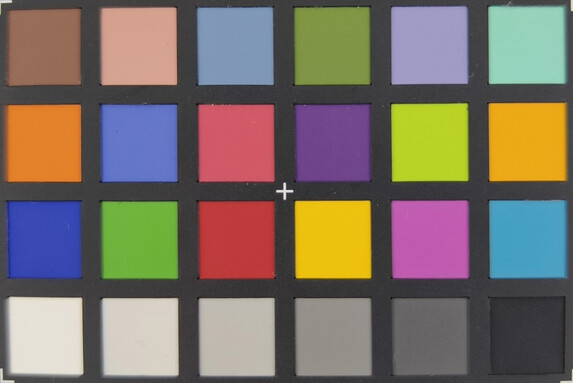
11.6 ∆E
4.2 ∆E
10.3 ∆E
17.9 ∆E
9.1 ∆E
7.7 ∆E
3.1 ∆E
10.8 ∆E
3.8 ∆E
6.9 ∆E
7.5 ∆E
3.3 ∆E
5.6 ∆E
12.2 ∆E
4.1 ∆E
3 ∆E
5.9 ∆E
10.5 ∆E
6.5 ∆E
5.8 ∆E
9.3 ∆E
8.9 ∆E
6.3 ∆E
2.5 ∆E
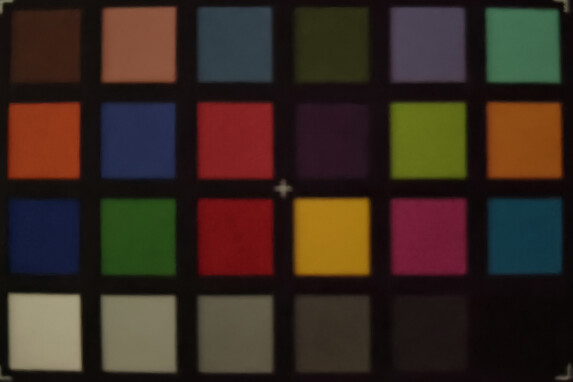
17.1 ∆E
24.5 ∆E
23.9 ∆E
21.7 ∆E
26.7 ∆E
29.2 ∆E
28.2 ∆E
18.9 ∆E
20.1 ∆E
18.8 ∆E
27.2 ∆E
34.2 ∆E
17.1 ∆E
25.3 ∆E
14.8 ∆E
25 ∆E
24.9 ∆E
26.4 ∆E
26.6 ∆E
27.9 ∆E
31.4 ∆E
27.1 ∆E
20.6 ∆E
12.9 ∆E
The Vivo phone comes with a modular 120-watt power supply, a USB cable, and a protective case. A protective film is also installed ex-factory.
The Warranty is 24 months after the purchase date.
A real feature of the predecessor X80 Pro is the huge 3D ultrasonic fingerprint sensor, which we also saw in the X90 Pro+. However, the X90 Pro only has an optical fingerprint sensor, so the area is much smaller, only one finger can be scanned, and the recognition rate cannot keep up with the class leader of the predecessor. It is a pity that Vivo has skimped here. However, the X90 Pro still features biometric authentication via 2D facial recognition using the front-facing camera.
At first glance, not much has changed in the display. Like the predecessor, the OLED panel of the X90 Pro measures 6.78 inches diagonally and has a refresh rate of up to 120 Hz. An adaptive adjustment of the frequency is still not possible, but an automatic switching between 60 Hz and 120 Hz is available. A big difference is seen in the pixel density. While the Vivo X80 Pro is equipped with a QHD+ resolution, the AMOLED display of the X90 Pro only works with Full HD+.
The Vivo smartphone uses PWM with a very low frequency of 60 Hz to control the luminance, which is typical for OLEDs, but the fluctuations are small. The maximum luminance of over 1000 cd/m² in the peak that we measured is very good, and the realistic APL18 test (Average Picture Level) also results in a satisfactory maximum brightness of 1225 cd/m² for this price range. A Xiaomi 13 is considerably brighter with 1,765 cd/m².
| 1002 cd/m² |
1024 cd/m² |
1054 cd/m² |
||
| 1005 cd/m² |
1018 cd/m² |
1063 cd/m² |
||
| 993 cd/m² |
1017 cd/m² |
1059 cd/m² |
||
Distribution of brightness
X-Rite i1Pro 3
Maximum: 1063 cd/m² (Nits) Average: 1026.1 cd/m² Minimum: 2.15 cd/m²
Brightness Distribution: 93 %
Center on Battery: 1018 cd/m²
Contrast: ∞:1 (Black: 0 cd/m²)
ΔE Color 0.9 | 0.59-29.43 Ø5.2
ΔE Greyscale 1.9 | 0.57-98 Ø5.4
99.9% sRGB (Calman 2D)
Gamma: 2.26
| Vivo X90 Pro AMOLED, 2800×1260, 6.78 |
Xiaomi 13 OLED, 2400×1080, 6.36 |
Google Pixel 7 Pro OLED, 3120×1440, 6.70 |
OnePlus 10T Fluid AMOLED, 2412×1080, 6.70 |
Vivo X90 Pro+ AMOLED, 3200×1440, 6.78 |
|
|---|---|---|---|---|---|
| Screen |
-6% |
9% |
-54% |
-5% |
|
| Brightness middle |
1018 |
1209 19% |
1022 0% |
861 -15% |
1109 9% |
| Brightness |
1026 |
1208 18% |
1025 0% |
856 -17% |
1124 10% |
| Brightness Distribution |
93 |
98 5% |
99 6% |
97 4% |
96 3% |
| Black Level * | |||||
| Colorchecker dE 2000 * |
0.9 |
1.2 -33% |
0.9 -0% |
2.27 -152% |
1.1 -22% |
| Colorchecker dE 2000 max. * |
2.2 |
3 -36% |
2.1 5% |
4.17 -90% |
2.7 -23% |
| Greyscale dE 2000 * |
1.9 |
2.1 -11% |
1.1 42% |
2.9 -53% |
2 -5% |
| Gamma |
2.26 97% |
2.26 97% |
2.22 99% |
2.303 96% |
2.25 98% |
| CCT |
6473 100% |
6504 100% |
6650 98% |
6141 106% |
6605 98% |
* … smaller is better
Screen Flickering / PWM (Pulse-Width Modulation)
ℹ
To dim the screen, some notebooks will simply cycle the backlight on and off in rapid succession – a method called Pulse Width Modulation (PWM) . This cycling frequency should ideally be undetectable to the human eye. If said frequency is too low, users with sensitive eyes may experience strain or headaches or even notice the flickering altogether.
| Screen flickering / PWM detected | 60 Hz | ||
|
The display backlight flickers at 60 Hz (Likely utilizing PWM) . The frequency of 60 Hz is very low, so the flickering may cause eyestrain and headaches after extended use. In comparison: 53 % of all tested devices do not use PWM to dim the display. If PWM was detected, an average of 19288 (minimum: 5 – maximum: 3846000) Hz was measured. |
|||
Measurement series with fixed zoom level and different brightness settings
Our display color analysis is performed with the help of a photospectrometer and the Calman software. The deviations in the color (0.9) and grayscale (1.9) representation are very low in the ZEISS profile and the color temperature of the panel is almost optimally calibrated. The high coverage of the color spaces is also worth mentioning; even the DCI-P3 is covered almost completely.
Display Response Times
ℹ
Display response times show how fast the screen is able to change from one color to the next. Slow response times can lead to afterimages and can cause moving objects to appear blurry (ghosting). Gamers of fast-paced 3D titles should pay special attention to fast response times.
| ↔ Response Time Black to White | ||
|---|---|---|
| 1.35 ms … rise ↗ and fall ↘ combined | ↗ 0.6915 ms rise | |
| ↘ 0.6615 ms fall | ||
| The screen shows very fast response rates in our tests and should be very well suited for fast-paced gaming. In comparison, all tested devices range from 0.4 (minimum) to 240 (maximum) ms. » 1 % of all devices are better. This means that the measured response time is better than the average of all tested devices (22.6 ms). |
||
| ↔ Response Time 50% Grey to 80% Grey | ||
| 1.56 ms … rise ↗ and fall ↘ combined | ↗ ms rise | |
| ↘ ms fall | ||
| The screen shows very fast response rates in our tests and should be very well suited for fast-paced gaming. In comparison, all tested devices range from 0.25 (minimum) to 636 (maximum) ms. » 2 % of all devices are better. This means that the measured response time is better than the average of all tested devices (35.6 ms). |
||
Outdoors, the X90 Pro makes a very good impression thanks to the high brightness in automatic mode. Even in midsummer sunlight, the display content should still be sufficiently visible. However, those who prefer to adjust the brightness manually will have to be content with 525 cd/m² and partly annoying reflections.
The viewing angles of the OLED panel are very good and the brightness drop is only noticeable from an extremely flat angle.
The X90 Pro features the latest flagship SoC from MediaTek, which is manufactured by TSMC in a second-generation 4 nm process. The chipset combines an ARM Cortex X3 core (3.05 GHz) with three ARM Cortex A715 performance cores (2.85 GHz) and four frugal Cortex A510 cores (1.8 GHz). For the graphics unit, MediaTek relies on the new ARM Immortalis G715 with eleven cores.
Compared to the Snapdragon 8 Gen 2 in the Pro+ model the single-core performance of the MediaTek Dimensity 9200 is lower by 7% and the multi-thread performance by 12%. PCMark’s system benchmark also turns out relatively low.
| Geekbench 5.4 | |
| Single-Core | |
| Vivo X90 Pro+ Qualcomm Snapdragon 8 Gen 2, Adreno 740, 12288 |
|
| Xiaomi 13 Qualcomm Snapdragon 8 Gen 2, Adreno 740, 8192 |
|
| Vivo X90 Pro MediaTek Dimensity 9200, Immortalis-G715 MP11, 12288 |
|
| Average MediaTek Dimensity 9200 |
|
| OnePlus 10T Qualcomm Snapdragon 8+ Gen 1, Adreno 730, 16384 |
|
| Google Pixel 7 Pro Google Tensor G2, Mali-G710 MP7, 12288 |
|
| Average of class Smartphone (119 – 1885, n=259, last 2 years) |
|
| Multi-Core | |
| Xiaomi 13 Qualcomm Snapdragon 8 Gen 2, Adreno 740, 8192 |
|
| Vivo X90 Pro+ Qualcomm Snapdragon 8 Gen 2, Adreno 740, 12288 |
|
| Vivo X90 Pro MediaTek Dimensity 9200, Immortalis-G715 MP11, 12288 |
|
| Average MediaTek Dimensity 9200 |
|
| OnePlus 10T Qualcomm Snapdragon 8+ Gen 1, Adreno 730, 16384 |
|
| Google Pixel 7 Pro Google Tensor G2, Mali-G710 MP7, 12288 |
|
| Average of class Smartphone (466 – 5538, n=259, last 2 years) |
|
| Antutu v9 – Total Score | |
| Xiaomi 13 Qualcomm Snapdragon 8 Gen 2, Adreno 740, 8192 |
|
| Vivo X90 Pro+ Qualcomm Snapdragon 8 Gen 2, Adreno 740, 12288 |
|
| Vivo X90 Pro MediaTek Dimensity 9200, Immortalis-G715 MP11, 12288 |
|
| Average MediaTek Dimensity 9200 |
|
| OnePlus 10T Qualcomm Snapdragon 8+ Gen 1, Adreno 730, 16384 |
|
| Google Pixel 7 Pro Google Tensor G2, Mali-G710 MP7, 12288 |
|
| Average of class Smartphone (111952 – 1300282, n=167, last 2 years) |
|
| PCMark for Android – Work 3.0 | |
| OnePlus 10T Qualcomm Snapdragon 8+ Gen 1, Adreno 730, 16384 |
|
| Xiaomi 13 Qualcomm Snapdragon 8 Gen 2, Adreno 740, 8192 |
|
| Vivo X90 Pro+ Qualcomm Snapdragon 8 Gen 2, Adreno 740, 12288 |
|
| Google Pixel 7 Pro Google Tensor G2, Mali-G710 MP7, 12288 |
|
| Average of class Smartphone (4436 – 19200, n=226, last 2 years) |
|
| Vivo X90 Pro MediaTek Dimensity 9200, Immortalis-G715 MP11, 12288 |
|
| Average MediaTek Dimensity 9200 |
|
| CrossMark – Overall | |
| Xiaomi 13 Qualcomm Snapdragon 8 Gen 2, Adreno 740, 8192 |
|
| Vivo X90 Pro+ Qualcomm Snapdragon 8 Gen 2, Adreno 740, 12288 |
|
| Vivo X90 Pro MediaTek Dimensity 9200, Immortalis-G715 MP11, 12288 |
|
| Average MediaTek Dimensity 9200 |
|
| Google Pixel 7 Pro Google Tensor G2, Mali-G710 MP7, 12288 |
|
| OnePlus 10T Qualcomm Snapdragon 8+ Gen 1, Adreno 730, 16384 |
|
| Average of class Smartphone (226 – 1332, n=105, last 2 years) |
|
| BaseMark OS II | |
| Overall | |
| OnePlus 10T Qualcomm Snapdragon 8+ Gen 1, Adreno 730, 16384 |
|
| Xiaomi 13 Qualcomm Snapdragon 8 Gen 2, Adreno 740, 8192 |
|
| Vivo X90 Pro+ Qualcomm Snapdragon 8 Gen 2, Adreno 740, 12288 |
|
| Vivo X90 Pro MediaTek Dimensity 9200, Immortalis-G715 MP11, 12288 |
|
| Average MediaTek Dimensity 9200 |
|
| Google Pixel 7 Pro Google Tensor G2, Mali-G710 MP7, 12288 |
|
| Average of class Smartphone (411 – 9555, n=172, last 2 years) |
|
| System | |
| Xiaomi 13 Qualcomm Snapdragon 8 Gen 2, Adreno 740, 8192 |
|
| Vivo X90 Pro+ Qualcomm Snapdragon 8 Gen 2, Adreno 740, 12288 |
|
| OnePlus 10T Qualcomm Snapdragon 8+ Gen 1, Adreno 730, 16384 |
|
| Vivo X90 Pro MediaTek Dimensity 9200, Immortalis-G715 MP11, 12288 |
|
| Average MediaTek Dimensity 9200 |
|
| Google Pixel 7 Pro Google Tensor G2, Mali-G710 MP7, 12288 |
|
| Average of class Smartphone (2083 – 19657, n=172, last 2 years) |
|
| Memory | |
| Vivo X90 Pro MediaTek Dimensity 9200, Immortalis-G715 MP11, 12288 |
|
| Average MediaTek Dimensity 9200 |
|
| OnePlus 10T Qualcomm Snapdragon 8+ Gen 1, Adreno 730, 16384 |
|
| Xiaomi 13 Qualcomm Snapdragon 8 Gen 2, Adreno 740, 8192 |
|
| Vivo X90 Pro+ Qualcomm Snapdragon 8 Gen 2, Adreno 740, 12288 |
|
| Average of class Smartphone (670 – 11617, n=172, last 2 years) |
|
| Google Pixel 7 Pro Google Tensor G2, Mali-G710 MP7, 12288 |
|
| Graphics | |
| Vivo X90 Pro MediaTek Dimensity 9200, Immortalis-G715 MP11, 12288 |
|
| Average MediaTek Dimensity 9200 |
|
| OnePlus 10T Qualcomm Snapdragon 8+ Gen 1, Adreno 730, 16384 |
|
| Xiaomi 13 Qualcomm Snapdragon 8 Gen 2, Adreno 740, 8192 |
|
| Vivo X90 Pro+ Qualcomm Snapdragon 8 Gen 2, Adreno 740, 12288 |
|
| Google Pixel 7 Pro Google Tensor G2, Mali-G710 MP7, 12288 |
|
| Average of class Smartphone (697 – 28497, n=172, last 2 years) |
|
| Web | |
| OnePlus 10T Qualcomm Snapdragon 8+ Gen 1, Adreno 730, 16384 |
|
| Google Pixel 7 Pro Google Tensor G2, Mali-G710 MP7, 12288 |
|
| Xiaomi 13 Qualcomm Snapdragon 8 Gen 2, Adreno 740, 8192 |
|
| Vivo X90 Pro+ Qualcomm Snapdragon 8 Gen 2, Adreno 740, 12288 |
|
| Average of class Smartphone (10 – 2392, n=172, last 2 years) |
|
| Vivo X90 Pro MediaTek Dimensity 9200, Immortalis-G715 MP11, 12288 |
|
| Average MediaTek Dimensity 9200 |
|
| UL Procyon AI Inference – Overall Score | |
| Vivo X90 Pro MediaTek Dimensity 9200, Immortalis-G715 MP11, 12288 |
|
| Average MediaTek Dimensity 9200 |
|
| Google Pixel 7 Pro Google Tensor G2, Mali-G710 MP7, 12288 |
|
| Average of class Smartphone (207 – 84787, n=101, last 2 years) |
|
| Vivo X90 Pro+ Qualcomm Snapdragon 8 Gen 2, Adreno 740, 12288 |
|
| Xiaomi 13 Qualcomm Snapdragon 8 Gen 2, Adreno 740, 8192 |
|
| OnePlus 10T Qualcomm Snapdragon 8+ Gen 1, Adreno 730, 16384 |
|
The MediaTek Dimensity 9200 performs well in GFXBench’s graphics tests. However, even the onscreen rates are often lower than in the Pro+ model which has to cope with the significantly higher resolution. The browser benchmarks and the BaseMark OS II browser test are also conspicuously low.
| 3DMark / Wild Life Extreme Unlimited | |
| Vivo X90 Pro Immortalis-G715 MP11, Dimensity 9200, 256 GB UFS 4.0 Flash |
|
| Xiaomi 13 Adreno 740, SD 8 Gen 2, 256 GB UFS 4.0 Flash |
|
| Vivo X90 Pro+ Adreno 740, SD 8 Gen 2, 256 GB UFS 4.0 Flash |
|
| OnePlus 10T Adreno 730, SD 8+ Gen 1, 256 GB UFS 3.1 Flash |
|
| Google Pixel 7 Pro Mali-G710 MP7, Tensor G2, 128 GB UFS 3.1 Flash |
|
| 3DMark / Wild Life Extreme | |
| Vivo X90 Pro Immortalis-G715 MP11, Dimensity 9200, 256 GB UFS 4.0 Flash |
|
| Xiaomi 13 Adreno 740, SD 8 Gen 2, 256 GB UFS 4.0 Flash |
|
| Vivo X90 Pro+ Adreno 740, SD 8 Gen 2, 256 GB UFS 4.0 Flash |
|
| OnePlus 10T Adreno 730, SD 8+ Gen 1, 256 GB UFS 3.1 Flash |
|
| Google Pixel 7 Pro Mali-G710 MP7, Tensor G2, 128 GB UFS 3.1 Flash |
|
| 3DMark / Wild Life Unlimited Score | |
| Vivo X90 Pro+ Adreno 740, SD 8 Gen 2, 256 GB UFS 4.0 Flash |
|
| Xiaomi 13 Adreno 740, SD 8 Gen 2, 256 GB UFS 4.0 Flash |
|
| Vivo X90 Pro Immortalis-G715 MP11, Dimensity 9200, 256 GB UFS 4.0 Flash |
|
| OnePlus 10T Adreno 730, SD 8+ Gen 1, 256 GB UFS 3.1 Flash |
|
| Google Pixel 7 Pro Mali-G710 MP7, Tensor G2, 128 GB UFS 3.1 Flash |
|
| GFXBench (DX / GLBenchmark) 2.7 / T-Rex Onscreen | |
| Google Pixel 7 Pro Mali-G710 MP7, Tensor G2, 128 GB UFS 3.1 Flash |
|
| Xiaomi 13 Adreno 740, SD 8 Gen 2, 256 GB UFS 4.0 Flash |
|
| Vivo X90 Pro+ Adreno 740, SD 8 Gen 2, 256 GB UFS 4.0 Flash |
|
| Vivo X90 Pro Immortalis-G715 MP11, Dimensity 9200, 256 GB UFS 4.0 Flash |
|
| OnePlus 10T Adreno 730, SD 8+ Gen 1, 256 GB UFS 3.1 Flash |
|
| GFXBench (DX / GLBenchmark) 2.7 / T-Rex Offscreen | |
| Vivo X90 Pro+ Adreno 740, SD 8 Gen 2, 256 GB UFS 4.0 Flash |
|
| Vivo X90 Pro Immortalis-G715 MP11, Dimensity 9200, 256 GB UFS 4.0 Flash |
|
| OnePlus 10T Adreno 730, SD 8+ Gen 1, 256 GB UFS 3.1 Flash |
|
| Xiaomi 13 Adreno 740, SD 8 Gen 2, 256 GB UFS 4.0 Flash |
|
| Google Pixel 7 Pro Mali-G710 MP7, Tensor G2, 128 GB UFS 3.1 Flash |
|
| GFXBench 3.0 / Manhattan Onscreen OGL | |
| Xiaomi 13 Adreno 740, SD 8 Gen 2, 256 GB UFS 4.0 Flash |
|
| Vivo X90 Pro Immortalis-G715 MP11, Dimensity 9200, 256 GB UFS 4.0 Flash |
|
| Vivo X90 Pro+ Adreno 740, SD 8 Gen 2, 256 GB UFS 4.0 Flash |
|
| Google Pixel 7 Pro Mali-G710 MP7, Tensor G2, 128 GB UFS 3.1 Flash |
|
| OnePlus 10T Adreno 730, SD 8+ Gen 1, 256 GB UFS 3.1 Flash |
|
| GFXBench 3.0 / 1080p Manhattan Offscreen | |
| Vivo X90 Pro+ Adreno 740, SD 8 Gen 2, 256 GB UFS 4.0 Flash |
|
| Vivo X90 Pro Immortalis-G715 MP11, Dimensity 9200, 256 GB UFS 4.0 Flash |
|
| Xiaomi 13 Adreno 740, SD 8 Gen 2, 256 GB UFS 4.0 Flash |
|
| OnePlus 10T Adreno 730, SD 8+ Gen 1, 256 GB UFS 3.1 Flash |
|
| Google Pixel 7 Pro Mali-G710 MP7, Tensor G2, 128 GB UFS 3.1 Flash |
|
| GFXBench 3.1 / Manhattan ES 3.1 Onscreen | |
| Xiaomi 13 Adreno 740, SD 8 Gen 2, 256 GB UFS 4.0 Flash |
|
| Vivo X90 Pro+ Adreno 740, SD 8 Gen 2, 256 GB UFS 4.0 Flash |
|
| Vivo X90 Pro Immortalis-G715 MP11, Dimensity 9200, 256 GB UFS 4.0 Flash |
|
| OnePlus 10T Adreno 730, SD 8+ Gen 1, 256 GB UFS 3.1 Flash |
|
| Google Pixel 7 Pro Mali-G710 MP7, Tensor G2, 128 GB UFS 3.1 Flash |
|
| GFXBench 3.1 / Manhattan ES 3.1 Offscreen | |
| Vivo X90 Pro+ Adreno 740, SD 8 Gen 2, 256 GB UFS 4.0 Flash |
|
| Xiaomi 13 Adreno 740, SD 8 Gen 2, 256 GB UFS 4.0 Flash |
|
| OnePlus 10T Adreno 730, SD 8+ Gen 1, 256 GB UFS 3.1 Flash |
|
| Vivo X90 Pro Immortalis-G715 MP11, Dimensity 9200, 256 GB UFS 4.0 Flash |
|
| Google Pixel 7 Pro Mali-G710 MP7, Tensor G2, 128 GB UFS 3.1 Flash |
|
| GFXBench / Car Chase Onscreen | |
| Xiaomi 13 Adreno 740, SD 8 Gen 2, 256 GB UFS 4.0 Flash |
|
| Vivo X90 Pro Immortalis-G715 MP11, Dimensity 9200, 256 GB UFS 4.0 Flash |
|
| Vivo X90 Pro+ Adreno 740, SD 8 Gen 2, 256 GB UFS 4.0 Flash |
|
| OnePlus 10T Adreno 730, SD 8+ Gen 1, 256 GB UFS 3.1 Flash |
|
| Google Pixel 7 Pro Mali-G710 MP7, Tensor G2, 128 GB UFS 3.1 Flash |
|
| GFXBench / Car Chase Offscreen | |
| Vivo X90 Pro+ Adreno 740, SD 8 Gen 2, 256 GB UFS 4.0 Flash |
|
| OnePlus 10T Adreno 730, SD 8+ Gen 1, 256 GB UFS 3.1 Flash |
|
| Xiaomi 13 Adreno 740, SD 8 Gen 2, 256 GB UFS 4.0 Flash |
|
| Vivo X90 Pro Immortalis-G715 MP11, Dimensity 9200, 256 GB UFS 4.0 Flash |
|
| Google Pixel 7 Pro Mali-G710 MP7, Tensor G2, 128 GB UFS 3.1 Flash |
|
| GFXBench / Aztec Ruins High Tier Onscreen | |
| Vivo X90 Pro Immortalis-G715 MP11, Dimensity 9200, 256 GB UFS 4.0 Flash |
|
| Xiaomi 13 Adreno 740, SD 8 Gen 2, 256 GB UFS 4.0 Flash |
|
| OnePlus 10T Adreno 730, SD 8+ Gen 1, 256 GB UFS 3.1 Flash |
|
| Vivo X90 Pro+ Adreno 740, SD 8 Gen 2, 256 GB UFS 4.0 Flash |
|
| Google Pixel 7 Pro Mali-G710 MP7, Tensor G2, 128 GB UFS 3.1 Flash |
|
| GFXBench / Aztec Ruins High Tier Offscreen | |
| Vivo X90 Pro+ Adreno 740, SD 8 Gen 2, 256 GB UFS 4.0 Flash |
|
| Xiaomi 13 Adreno 740, SD 8 Gen 2, 256 GB UFS 4.0 Flash |
|
| Vivo X90 Pro Immortalis-G715 MP11, Dimensity 9200, 256 GB UFS 4.0 Flash |
|
| OnePlus 10T Adreno 730, SD 8+ Gen 1, 256 GB UFS 3.1 Flash |
|
| Google Pixel 7 Pro Mali-G710 MP7, Tensor G2, 128 GB UFS 3.1 Flash |
|
| GFXBench / Aztec Ruins Normal Tier Onscreen | |
| Xiaomi 13 Adreno 740, SD 8 Gen 2, 256 GB UFS 4.0 Flash |
|
| Vivo X90 Pro Immortalis-G715 MP11, Dimensity 9200, 256 GB UFS 4.0 Flash |
|
| Vivo X90 Pro+ Adreno 740, SD 8 Gen 2, 256 GB UFS 4.0 Flash |
|
| OnePlus 10T Adreno 730, SD 8+ Gen 1, 256 GB UFS 3.1 Flash |
|
| Google Pixel 7 Pro Mali-G710 MP7, Tensor G2, 128 GB UFS 3.1 Flash |
|
| GFXBench / Aztec Ruins Normal Tier Offscreen | |
| Vivo X90 Pro+ Adreno 740, SD 8 Gen 2, 256 GB UFS 4.0 Flash |
|
| Xiaomi 13 Adreno 740, SD 8 Gen 2, 256 GB UFS 4.0 Flash |
|
| OnePlus 10T Adreno 730, SD 8+ Gen 1, 256 GB UFS 3.1 Flash |
|
| Vivo X90 Pro Immortalis-G715 MP11, Dimensity 9200, 256 GB UFS 4.0 Flash |
|
| Google Pixel 7 Pro Mali-G710 MP7, Tensor G2, 128 GB UFS 3.1 Flash |
|
| Jetstream 2 – Total Score | |
| Xiaomi 13 (Chrome 108) |
|
| Vivo X90 Pro+ (Chrome Beta 110) |
|
| Google Pixel 7 Pro (Chrome 106) |
|
| OnePlus 10T (Chrome 104) |
|
| Average of class Smartphone (14.8 – 282, n=169, last 2 years) |
|
| Vivo X90 Pro (Chrome 109) |
|
| Average MediaTek Dimensity 9200 |
|
| Speedometer 2.0 – Result | |
| Xiaomi 13 (Chrome 108) |
|
| Google Pixel 7 Pro (Chrome 106) |
|
| OnePlus 10T (Chrome 104) |
|
| Average of class Smartphone (12.8 – 375, n=157, last 2 years) |
|
| Vivo X90 Pro (Chrome 109) |
|
| Average MediaTek Dimensity 9200 |
|
| WebXPRT 4 – Overall Score | |
| Vivo X90 Pro+ (Chrome Beta 110) |
|
| Xiaomi 13 (Chrome 108) |
|
| Average of class Smartphone (25 – 202, n=63, last 2 years) |
|
| Google Pixel 7 Pro (Chrome 106) |
|
| OnePlus 10T |
|
| Vivo X90 Pro (Chrome 109) |
|
| Average MediaTek Dimensity 9200 |
|
| WebXPRT 3 – — | |
| OnePlus 10T (Chrome 104) |
|
| Average of class Smartphone (27 – 292, n=163, last 2 years) |
|
| Google Pixel 7 Pro (Chrome 106) |
|
| Vivo X90 Pro (Chrome 109) |
|
| Average MediaTek Dimensity 9200 |
|
| Octane V2 – Total Score | |
| Google Pixel 7 Pro (Chrome 106) |
|
| Xiaomi 13 (Chrome 108) |
|
| OnePlus 10T (Chrome 104) |
|
| Average of class Smartphone (3905 – 74261, n=196, last 2 years) |
|
| Vivo X90 Pro+ (Chrome Beta 110) |
|
| Vivo X90 Pro (Chrome 109) |
|
| Average MediaTek Dimensity 9200 |
|
| Mozilla Kraken 1.1 – Total Score | |
| Average of class Smartphone (414 – 12437, n=179, last 2 years) |
|
| Average MediaTek Dimensity 9200 |
|
| Vivo X90 Pro (Chrome 109) |
|
| Vivo X90 Pro+ (Chrome Beta 110) |
|
| OnePlus 10T (Chrome 104) |
|
| Google Pixel 7 Pro (Chrome 106) |
|
| Xiaomi 13 (Chrome 108) |
|
* … smaller is better
| Vivo X90 Pro | Xiaomi 13 | Google Pixel 7 Pro | OnePlus 10T | Vivo X90 Pro+ | Average 256 GB UFS 4.0 Flash | Average of class Smartphone | ||||||||||||||||||||||||||||||||||||||||||||||||||||||||||||||||||||||||||||||||||||||||||||||||||||||||
|---|---|---|---|---|---|---|---|---|---|---|---|---|---|---|---|---|---|---|---|---|---|---|---|---|---|---|---|---|---|---|---|---|---|---|---|---|---|---|---|---|---|---|---|---|---|---|---|---|---|---|---|---|---|---|---|---|---|---|---|---|---|---|---|---|---|---|---|---|---|---|---|---|---|---|---|---|---|---|---|---|---|---|---|---|---|---|---|---|---|---|---|---|---|---|---|---|---|---|---|---|---|---|---|---|---|---|---|---|---|---|
| AndroBench 3-5 |
1% |
-56% |
-60% |
-3% |
-5% |
-64% |
||||||||||||||||||||||||||||||||||||||||||||||||||||||||||||||||||||||||||||||||||||||||||||||||||||||||
| Sequential Read 256KB |
3866.75 |
3454.01 -11% |
1346.78 -65% |
1568.37 -59% |
3397.4 -12% |
3548
The graphics performance of the Immortalis G715 offers enough graphics performance for demanding games like PUBG mobile even at the highest details for smooth playback at a constant 40 fps. The shooter is played constantly at about 60 FPS with the HD graphics setting, the new 90-fps mode is not available due to a frame lock on Vivo’s part – we use GameBench’s app to determine our frame rates. The full 120 Hz of the OLED panel is generally not supported in our test games. We also measured 60 fps in Armajet, although the arena shooter theoretically allows 144 fps. The open-world action RPG Genshin Impact is even only rendered at 30 fps with the X90 Pro. The surface temperatures are very low in our measurements. There is hardly any temperature development even under load. However, the X90 Pro shows a moderate performance loss of 20 to 25 percent in the 3DMark stress tests.
Power Supply (max.) 23.8 °C = 75 F | Room Temperature 21.3 °C = 70 F | Fluke t3000FC (calibrated) & Voltcraft IR-260 (+) The average temperature for the upper side under maximal load is 26.6 °C / 80 F, compared to the average of 32.7 °C / 91 F for the devices in the class Smartphone.
Vivo X90 Pro Immortalis-G715 MP11, Dimensity 9200, 256 GB UFS 4.0 Flash; Wild Life Extreme Stress Test; 1.1.0.2: Ø19.9 (18.5-22.6) Xiaomi 13 Adreno 740, SD 8 Gen 2, 256 GB UFS 4.0 Flash; Wild Life Extreme Stress Test; 1.1.0.2: Ø20.6 (17.7-22.4) Google Pixel 7 Pro Mali-G710 MP7, Tensor G2, 128 GB UFS 3.1 Flash; Wild Life Extreme Stress Test; 1.1.0.2: Ø9.93 (8.31-11) Vivo X90 Pro+ Adreno 740, SD 8 Gen 2, 256 GB UFS 4.0 Flash; Wild Life Extreme Stress Test; 1.1.0.2: Ø21.4 (19.4-22.3) Vivo X90 Pro Immortalis-G715 MP11, Dimensity 9200, 256 GB UFS 4.0 Flash; Wild Life Stress Test Stability; 0.0.0.0: Ø64.4 (58.3-78.6) Xiaomi 13 Adreno 740, SD 8 Gen 2, 256 GB UFS 4.0 Flash; Wild Life Stress Test Stability: Ø68.6 (62.7-79.5) Google Pixel 7 Pro Mali-G710 MP7, Tensor G2, 128 GB UFS 3.1 Flash; Wild Life Stress Test Stability: Ø32.8 (26.2-38.6) OnePlus 10T Adreno 730, SD 8+ Gen 1, 256 GB UFS 3.1 Flash; Wild Life Stress Test Stability; 0.0.0.0: Ø61.8 (59-63.6) Vivo X90 Pro+ Adreno 740, SD 8 Gen 2, 256 GB UFS 4.0 Flash; Wild Life Stress Test Stability; 0.0.0.0: Ø76.6 (70.7-80) Xiaomi 13 Adreno 740, SD 8 Gen 2, 256 GB UFS 4.0 Flash; Wild Life Unlimited Stress Test Stability: Ø80 (76.5-84.2) Google Pixel 7 Pro Mali-G710 MP7, Tensor G2, 128 GB UFS 3.1 Flash; Wild Life Unlimited Stress Test Stability: Ø36.5 (30.7-39.8) The stereo speakers reach a high maximum volume of over 92 dB(A) in our test. The sound output is characterized by tones from medium frequencies that could have been a bit more linear. However, a slight bass note is also recognizable. Alternatively, headphones can be connected via the USB-C port or wirelessly via Bluetooth.
| ||||||||||||||||||||||||||||||||||||||||||||||||||||||||||||||||||||||||||||||||||||||||||||||||||||||||


